Parent Information
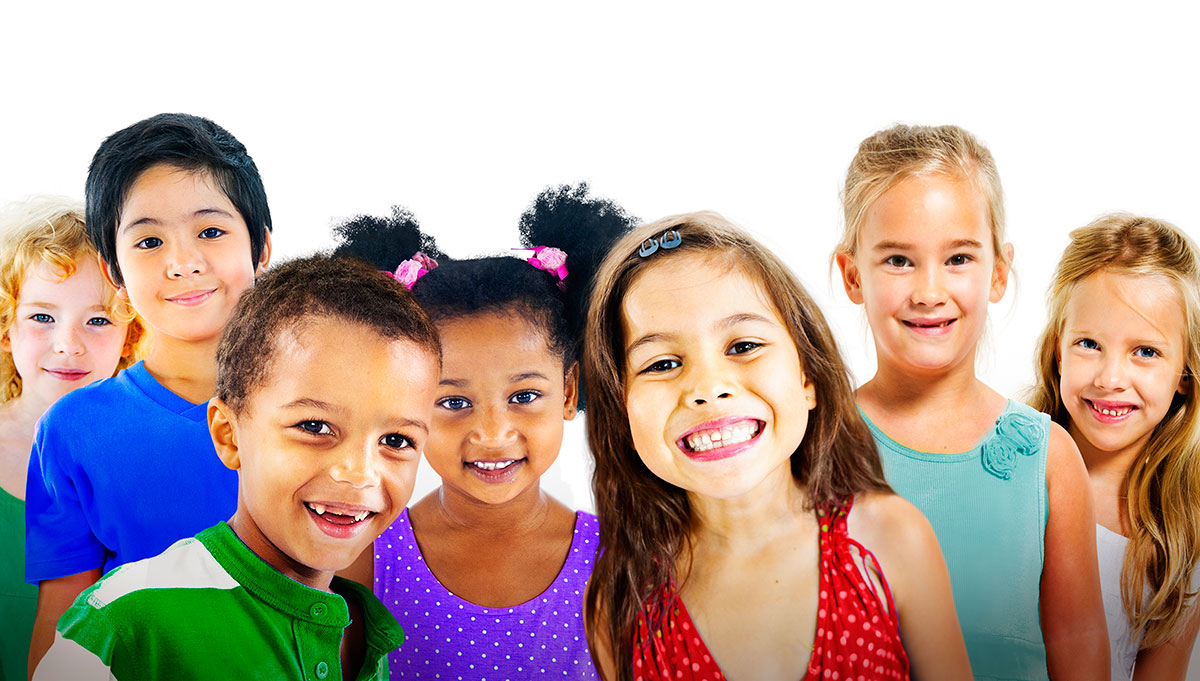
Articulation: Ability for your child to produce sounds
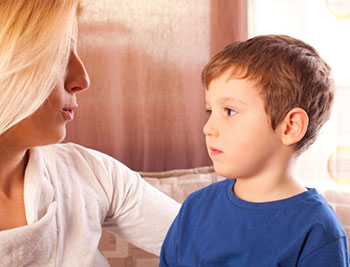 As there is an age range to account for individual variation, the chart below denotes estimates for typical development of speech sound production:
As there is an age range to account for individual variation, the chart below denotes estimates for typical development of speech sound production:
| 2-3 years | 3-4 years | 4-5 years | 5-6 years | 6-7 years |
|---|---|---|---|---|
| P | K | S | L | R |
| B | G | CH | V | TH |
| M | T | SH | J | ZH |
| N | D | Z | ||
| H | NG | |||
| W | F | |||
| Y |
Early Cognitive Developmental Milestones
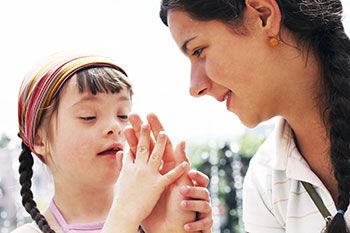 Cognitive development describes the foundation of intellectual skills that are acquired in the earlier years of development. These developmental milestones include skills in the follow areas:
Cognitive development describes the foundation of intellectual skills that are acquired in the earlier years of development. These developmental milestones include skills in the follow areas:
- Language (expressive and receptive abilities)
- Motor coordination (gross motor skills, gross motor skills)
- Social interaction (peer interactions, group play)
- Adaptive (feeding, toileting, dressing)
By 1year
- focuses with eyes on moving objects
- differentiates between familiar and unfamiliar people
- copies smiling and other facial expressions
- completes basic directions
- mimics clapping and waving
- moves objects “in” and “out” of containers
Between 1-2 years
- reproduces adults’ words and actions
- follows familiar directives
- carries out commands appropriately
- matches objects
- names and points to familiar items during book reading
- understands the difference between pronouns “you” and “me”
- explores their environment
Between 2-3 years
- completes simple directives
- enjoys shard book readings and names several items in pictures
- sorts items based on association
- understands objects functions
- understands basic size concepts
- identifies themselves in a mirror
- begins to ask simple questions, for example “what” and “where”
Between 3-4 years
- begins to understand color concepts up to six colors
- continues to develop knowledge of size concepts
- draws with more recognizable accuracy
- begins to ask more complex questions, for example “why” and “how”
- identified their age
- identified their name
- continues to build attention span
- has increased understanding of concepts of the functions and grouping of objects and part/whole
- starts to understand simple time concepts, for example “past” and “present”
Between 4-5 years
- understands word relationships, for example rhyming
- understands and labels 4-6 colors
- finds corresponding pictures to match objects
- uses main body parts when drawing people in pictures
- writes name and draws more accurate pictures
- understands basic quantity concepts
- identifies address
- expands attention span and acquires information by listening and exploring
- continues to expand knowledge of basic concepts, for example “part/whole” relationships
- expands knowledge of temporal concepts, for example “last week” and “yesterday”
Between 5-6 years
- recalls details in order to relay stories
- identifies letters and several numbers
- understands quantity concepts, for example counting to ten
- categorizes items into groups
- continues to develop temporal concepts, for example “today” and “yesterday”
- continues to extend attention span to longer periods of time
- begins to understand reasoning concepts to answer “why” questions
Expressive Language: How your child uses spoken language
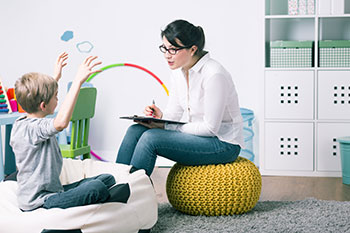 Birth
Birth
- Infants produces cries to indicate if they are content or whether they are in pain.
0-3 months
- An infant in the 0-3 month age range is beginning to smile in response to others. They are also beginning to vocalize via “cooing”.
- They are beginning to use different cries in order to communicate their needs (i.e. hungry, hurt).
4-6 months
- An infant in the 4-6 month age range is beginning to play with sounds and will make sounds to entertain themselves.
- Your baby is also beginning to babble at this stage and may even sound like they are “talking”.
- During these periods of babbling, consonant sounds can be heard.
- Aside from crying, they are beginning to use other sounds, such as grunting, to communicate their needs.
7-12 months
- During this stage, your child’s sound repertoire is growing as they are developing more vowel and consonant sounds that can be heard in their babbling and communication attempts.
- This is also the stage where your child will use their first word.
1-2 years
- At the 1-2 year range, a child is continuing to build upon their vocabulary and should have acquired approximately 50 words in their vocabulary by the end of this period. Your child is also combining two words to make short phrases during this stage, for example “More juice.” The production of these words is getting clearer during this time as they are using more consonant sounds.
- Your child is beginning to recognize and use simple rules of grammar, for example verb+ing forms (i.e. running).
2-3 years
- During this stage, your child is undergoing what is known as a “vocabulary explosion”. They are acquiring a significant amount of new vocabulary words, and may even be learning new words each day.
- The length of phrases during this age range is 1-3 word phrases that can be understood by familiar listeners.
- Your child is beginning to use basic size concepts (i.e. “big”)
- At this stage, your child is continuing to use more appropriate grammar, for example plural –s (i.e. cats).
3-4 years
- During this period, children are combining more words together to form 4+ word phrases and sentences when they are talking. They are also able to recall and talk about events that happen outside the home (i.e. at daycare).
- Your child’s speech is also clear at this time and should be understood the majority of the time by both familiar and unfamiliar listeners.
- More complex grammar rules are also developing at this time, for example pronouns, past tense verbs, and prepositions.
- Children this age are also developing their knowledge and use of basic concepts (i.e. spatial, qualitative) during this period.
4-5 years
- By the 4-5 your old range, children are using clear sentences that are easy to listen to and understand.
- Your child is able to provide more details within their stories and sentences and are able to understand, as well as ask, more complex questions.
- The majority of your child’s sounds are produced correctly by this age, with the possible exception of later developing sounds, such as “r” and “th”.
- At this age, children are readily engaging in conversation with their family, as well as their peers.
They have mastered and are appropriately using the grammar rules of their native language by the end of the 4-5 year developmental stage. - They are also mastering their understanding and use of basic concepts, such as quantity and spatial concepts.
FINE MOTOR SKILLS
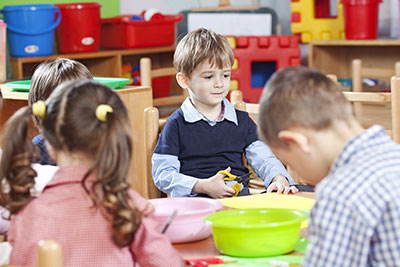 Typical Development for Ages 0-6 years as follow:
Typical Development for Ages 0-6 years as follow:
0-3 Months Old
- Makes fist with hands
- Follows others’ movements with their eyes
- Starts to hold objects in hands
- Watches movement of own hands
- Random uncontrolled arm movements
- Brings hands to mouth
3-6 Months Old
- Transfers objects between hands
- Uses both arms to reach for toys
- Notices objects within a few feet
- Holds hands together
6-9 Months Old
- Holds and grasps onto objects
- Moves objects with fingers using raking grasp
- Holds bottle
- Uses fist to squeeze objects
- Brings objects to mouth
- Discovers textures and mouths objects to explore
- Holds one object while looking for another
- Uses index finger to poke objects
- Plays with hands
9-12 Months Old
- Uses fisted grasp to grab crayons
- Crosses midline to transfer objects from one hand to another
- Brings hands to mouth to feed with finger foods
- Holds two small objects in one hand
- Turns pages in book
- Places small items in container or cup
- Uses pincer grasp
- Starts to show hand preference (left vs right)
12-18 Months Old
- Uses crayons to scribble on paper
- Builds tower two blocks high
- Waves hi/bye
- Places small objects in container
- Scoops objects with spoon/shovel
- Claps hands
- Bangs two objects together
18-24 Months Old
- Puts rings on peg
- Builds tower three- to four- blocks high
- Scribbles with pencil
- Starts to hold crayon with thumb and fingertips
- Turns pages one at a time
- Opens loosely wrapped items
- Starts to cut paper with scissors
2 Years Old
- Turns doorknobs
- Builds tower nine blocks high
- Manipulates play dough
- Uses pincer grasp to pick up small items
- Completes three piece puzzle
- Uses spoon to eat
- Zips and Unzips larger zippers
- Scribbles
- Snips paper with scissors
- Strings larger beads
- Washes hands
- Screws lids on and off containers
3 Years Old
- Sorts items
- Copies drawing of circle
- Cuts paper in half
- Strings half inch beads
- Fastens larger buttons
- Laces card
- Copies lines and circle shapes
- Cuts along line within half inch accuracy
4 Years Old
- Uses fork to eat
- Moves paper to cut along line
- Copies cross “+” and “X” shapes
- Completes four-five piece puzzles
- Uses scissors to cut big circles
- Touches tip of each finger to thumb
- Gets dressed/undressed un assisted
- Uses dominate hand (left/right)
- Colors within quarter inch of lines
5 Years Old
- Grasps pencil
- Prints names
- Copies triangle and diamond shapes
- Uses key to open lock
- Person drawings that include six different parts
- Cuts out circle
6 Years Old
- Copies first name
- Uses blocks to build small structures
- Prints numbers
- Prints upper and lower case alphabet
- Prints at least three simple words
- Completes puzzles up to twenty pieces
- Uses knife to cut food
- Cuts appropriately with scissors
GROSS MOTOR SKILLS
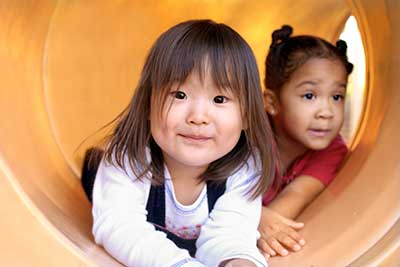 Typical Development for Ages 0-4 years as follows:
Typical Development for Ages 0-4 years as follows:
0-3 Months Old
- Rolls to back from both sides
- Bends and straightens arms
- Extends arms/legs lying on stomach
- Brings both feet to mouth
- Raises arms and legs
3-6 Months Old
- Elevates head and trunk
- Grasps both feet to hold
- Rolls from back to stomach
- Maintains balance while sitting
6-9 Months Old
- Uses arms to move forward
- From stomach raises upper trunk
- Lying on back, shift weight bilaterally
- Sits unsupported
9-12 Months Old
- Crawling
- Standing with support
- Cruising stable objects
- Raise from lying to sitting
12-18 Months Old
- Sitting cross legged
- Walks 5-10 steps forward
- Waling down steps with support
- Walks 5 steps backward
18-24 Months Old
- Runs forward 10 feet
- Jumps with feet together
- Throws ball
- Kicks ball
2 Years Old
- Descends steps unsupported
- Runs 30 feet
- Overhand throw
- Ascends steps 1 foot at a time
- Catches ball
3 Years Old
- Stands on 1 foot for 5 seconds
- Throws ball 10 feet forward
- Runs 15 yards in 6 seconds
- Jumps 3 inches above reach
- Hops on 1 foot
4 Years Old
- Hops 3 ft forward on 1 foot
- Throws ball 12 ft forward
- Catches ball from 5 ft away
- Jumps over objects with 2 foot take off
- Skips 8 steps
Intelligibility: Ability for listeners to understand your child’s speech
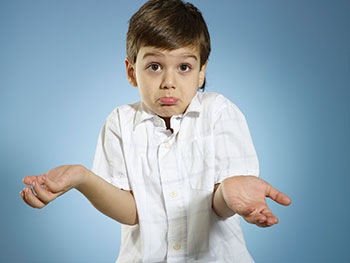 Percentage of speech that parents can understand
Percentage of speech that parents can understand
At 1.5 years = 25%
At 2 years = 50-75%
At 3 years = 75-100%
Percentage of speech that strangers can understand
At 1 year = 25%
At 2 years = 50%
At 3 years = 75%
At 4 years = 100%
Literacy Skills: Pre-reading and early reading skills
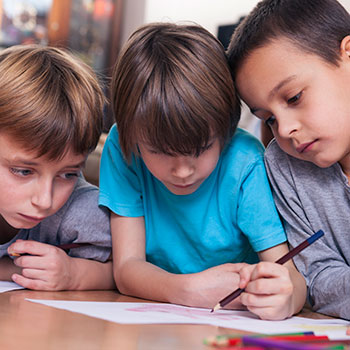 Birth-3 years
Birth-3 years
- Your child is able to remember the cover of familiar books
- During this stage your child enjoys pretending to read
- Can distinguish the upright position of a book
- Participates in shared book reading regularly
- Can label items within the book
- Is about to talk about he people or animals (characters) in the book
- Looks and listens to the pictures and stories
- Request for caregivers to read books aloud
- Begins to recognize letters that are in their name
- Begins to scribble on paper with intent
By 3-4 years
- During this stage, children are actively engaging in story book readings
- Begins to comprehend that printed words carry meaning
- Tries to read or write letters
- Recognizes familiar signs and logos within their environment
- Engages in nursery rhyme games
- Is able to match letters is beginning to use some letter sounds
- Enjoys using familiar letters and attempts to write them
By 5 years
- Children in this stage are identifying letters and their corresponding sounds
- Are able to apply listening comprehension skills in order to recall details from short stories
- Your child is using more complicated words to ask and answer questions
- Identifies and produces rhyming pairs
- Identifies age-appropriate sight words
- Comprehends that words are read from left to right on a page
- Is beginning to print letters on paper
By 6 years
- By this stage, children can read simple stories and retell them
- Children are able to read age-appropriate sight words with ease
- Children are beginning to blend letters to sound out new words when reading and spelling
- During written tasks, your child is beginning to engage in subject matter that Is of interest to them
- Attempts to use some capitalization and punctuation
Receptive Language: How your child understands spoken language
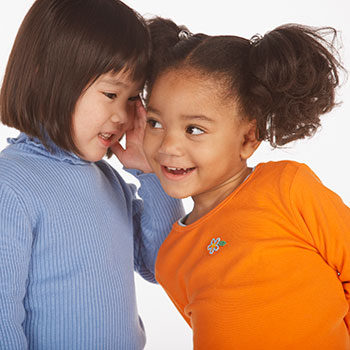 Birth
Birth
- After birth, the foundational skills for listening to and learning language are already in motion. Infants are hearing new sounds in their environment, and are responding via reactions to these sounds. For example, babies cease moving when they are startled, or begin to cry when they are awoken by a sound.
0-3 months
- Infants, during 0-3 months of age, are beginning to smile and turn towards speakers when they hear a familiar voice. They are also showing first signs of voice recognition as they can be comforted by a familiar voice when they are crying. 0-3 month old infants will also pause and observe when they hear unfamiliar voices.
4-6 months
- As an infant grows to be 4-6 months old, they are becoming more aware of their environment and can even understand the meaning of the word “no”. They also begin to identify the difference in voice tone, for example an angry voice. Babies this age are also interested in new sounds heard in their surroundings, such as: toys, appliances, animal sounds.
7-12 months
- During the 7-12 month range a baby is turning in the direction of the speaker when their name is called.
- They are also beginning to enjoy simple games with turn-taking, such as “peek-a-boo” and “pat-a-cake”.
- At this age, the child is also beginning to understand the meaning of some words that name familiar objects.
Your child is starting to comply with simple requests, such as “Give me five!”
1-2 years
- During the 1-2 years old range, a child is beginning to identify pictures of items within books when a parent or caregiver names them. They are also beginning to identify major body parts on themselves.
- During this period, your child is beginning to follow commands that are simple, such as “Come here!”, as well as comprehend basic questions “Where’s Daddy?”
- At this age, your child is taking part in listening to storybook readings and enjoys having the same book repeated. Children’s songs and nursery rhymes will also be favorites during this time.
2-3 years
- Between 2-3 years of age, your child is comprehending 2-step directions and can carry them out, for example “Go to your room and bring back your shoes”. Your child’s understanding of basic concepts and opposite relationships is also developing.
3-4 years
- By this time, your child comprehends basic questions (“What?”, “Where?”, “Who?”). They are also able to listen when their name is called, even if you are in a different room from them. This is a good age to receive a hearing assessment if there are any concerns or histories of ear infection.
4-5 years
- Once your child reaches the 4-5 year old range, they are participating in shared story book readings by asking and answering basic questions throughout the book.
- They are developing an awareness of print (letters and numbers) and can even identify some letters and numbers.
Speech Pattern (Phonological Processes) Developmental Norms
 The following table depicts expected development of speech patterns at certain ages.
The following table depicts expected development of speech patterns at certain ages.
| Speech Pattern | Example | No Longer Age-Appropriate |
|---|---|---|
| Voicing of first consonant | tip = dip | 3 years |
| Devoicing of last consonant | dog = dock | 3 years |
| Deletion of last consonant | cat = ca | 3 years |
| Fronting | king = ting | 3.5 years |
| Assimilation | yellow = lellow | 3.5 years |
| Deletion of syllable | dinosaur = disaur | 4 years |
| Reduction of consonant cluster | green = geen | 4 years |
| Gliding | ring = wing | 5 years |
| Stopping | soap = toap | 3 years |


